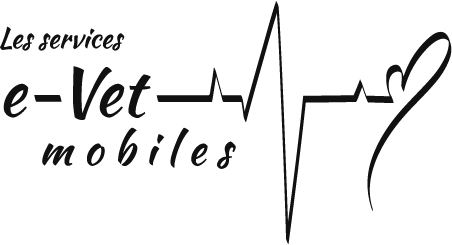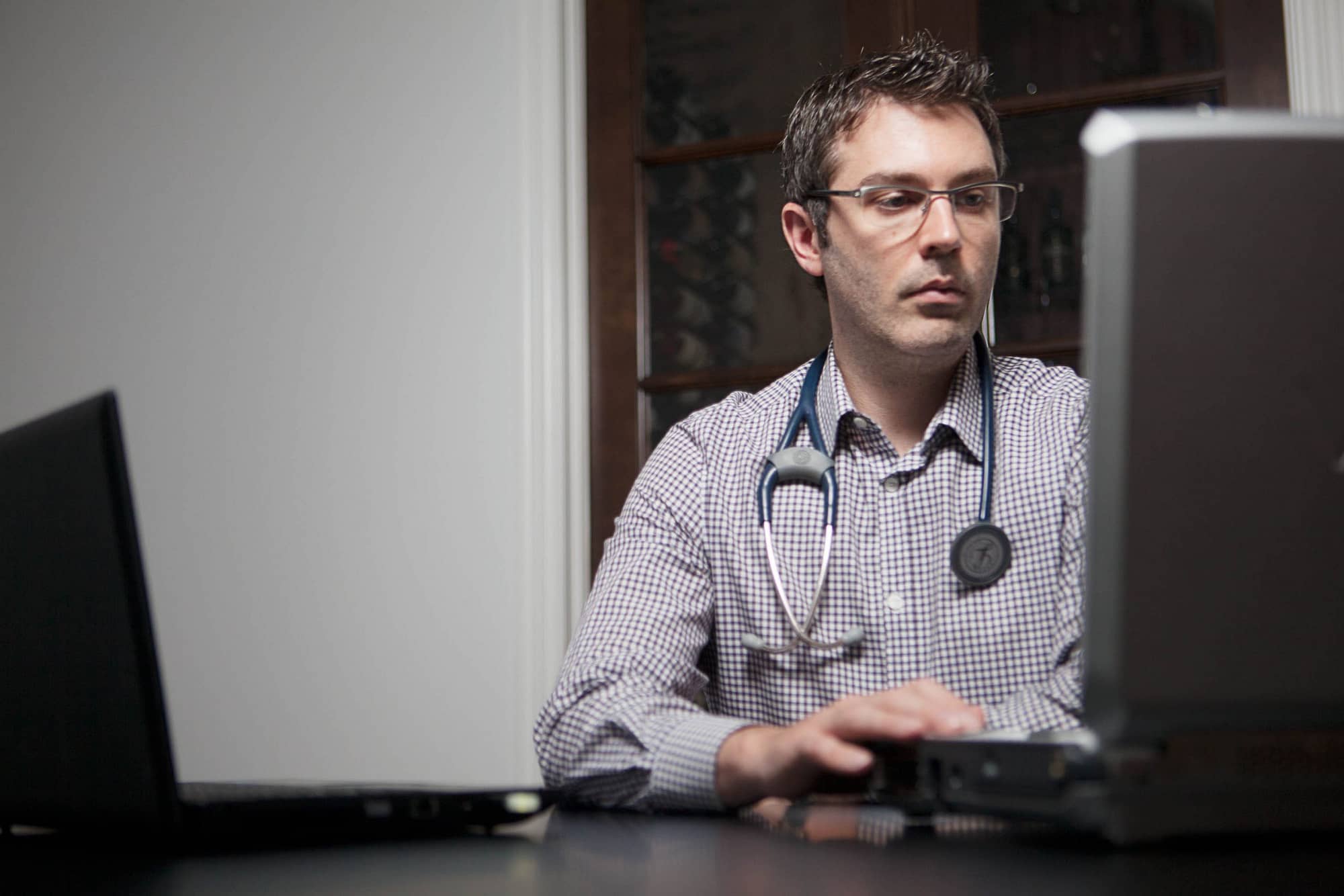Mobile cardiology service: Clients
Why should my pet see a veterinary cardiologist?
In addition to having specialized training and expertise, veterinary cardiologists have access to state-of-the-art equipment for both diagnostic and therapeutic purposes. Should your animal show signs of heart disease, a consultation with a veterinary cardiologist is the most effective way to obtain a quick and accurate diagnosis and determine the best therapeutic management strategy. In addition, if your pet requires anesthesia, the cardiologist will determine what risks are involved with the procedure and customize a unique anesthetic protocol based on your pet’s heart condition.
Clinical signs that you may observe and that may be associated with heart disease include :
- Exercise intolerance
- Cough
- Shortness of breath or difficulty breathing
- Increased respiratory rate at rest
- Weakness, collapse or fainting
- Abnormally slow or rapid heart rate
- Restlessness (especially at night)
- Hind limb paralysis (cats only)
- Abdominal enlargement
Clinical signs that may be detected by your veterinarian and may suggest the presence of heart disease include :
- Heart murmur
- Cough
- Gallop rhythm (additional heart sound)
- Abnormally slow or fast heart rate
- Abnormal lung sounds
- Fluid accumulation (water) in the abdomen
- Enlarged heart on thoracic radiographs
Available services
Echocardiography
Echocardiography uses sound waves as they are reflected to produce an image of organs inside the body. A cardiac ultrasound allows us to visualize the heart muscle, blood flow, heart valves, adjacent structures as well as assess heart function.
This valuable diagnostic tool allows us to determine the origin of a heart murmur, identify the type of cardiac disease, its level of severity and suggest the best treatment.
In addition to performing echocardiography, Dr Boileau will :
- Review the patient’s record
- Perform a physical exam
- Review thoracic radiographs
- Analyze the ECG (if available)
- Make clinical recommendations
Several imaging modalities are used in echocardiography to allow the veterinary cardiologist to get a complete diagnostic picture of the patient’s heart condition.
M-mode :
M-mode is used to assess the size of the heart chambers, wall thickness and cardiac function.
2D imaging :
2D imaging produces an overall picture of the heart and surrounding vessels.
This modality is also used for :
- Measuring : size of heart chamber, cardiac function, wall thickness.
- To identify tumours, presence of pericardial effusion, cardiac shunts and abnormal cardiac valves.
Colour flow Doppler imaging :
Colour flow Doppler imaging offers a visual representation of the blood flow inside the heart by identifying both its velocity and direction. The colour indicates in which direction the blood is flowing, whereas colour intensity will give the cardiologist an idea of blood velocity.
A turbulent blood flow may also be detected using this imaging modality. It is particularly useful for diagnosing valvular and congenital anomalies.
Pulse wave Doppler and continuous wave doppler :
This modality allows an assessment of the velocity and direction of the blood flow inside the heart. Combined with colour flow Doppler imaging, it is useful to document abnormal blood flow, cardiac valve leakage and pressure gradient between heart chambers.
Available services
Electrocardiography (ECG)
An ECG is recommended in the following circumstances :
- An arrhythmia is detected on cardiac auscultation
- Syncope/collapse of unknown origin
Available services
Inpatient consultation
During an inpatient consultation, Dr Boileau will :
- Review the patient’s record
- Perform a physical exam
- Review thoracic radiographs (taken prior to the consultation)
- ECG analysis (if available)
- Make clinical recommendations
Available services
Blood pressure
Systemic hypertension can have adverse effects on cardiac function such as concentric left ventricle hypertrophy and increased mitral valve regurgitation.
In clinic, blood pressure measurements are usually taken indirectly using a pet MAP or Doppler.
Available services
Ambulatory ECG monitors
24-hour Holter monitor
An ECG is continuously recorded during a 24-hour period.
Dogs can wear the monitor at home for 24 hours while going about their normal routine.
However, cats and some small dogs may need to stay the night at the clinic to ensure a quality recording.
The Holter monitor is recommended in the following circumstances :
- To determine the origin of an episode of syncope/collapse
- To assess the need for antiarrhythmic treatment
- To assess the response to treatment of arrhythmia
- As a screening procedure for genetic heart disease (dilated cardiomyopathy in Dobermans, right ventricle arrythmogenic cardiomyopathy in Boxers)
Available services
Event monitor
An ECG is continuously recorded during a prolonged period (1 month).
Animals can wear the monitor at home during this period while going about their normal routine.
The event monitor is used to determine whether a syncope/collapse is due to dysrhythmia. The owner starts the cardiac recording the moment the event is witnessed.
Frequently asked questions
What is a heart murmur ?
A heart murmur is the sound produced by turbulent blood flow within the heart. This turbulence is usually caused by an increase in blood velocity or by blood moving through an abnormal/irregular structure.
A heart murmur will occur when there is a leaky heart valve, when a valve doesn’t open properly, or when other irregularities are present within the heart.
While the presence of a heart murmur in dogs is usually associated with heart disease, it is occasionally found to be benign (not associated with heart disease) in cats.
Will my pet need to be under anesthesia during echocardiography ?
No, general anesthesia is never necessary for this type of exam. On very rare occasions (approx. 5% of patients), a mild sedative is used to reduce the stress level for the animal and allow the cardiologist to obtain all the information necessary to maximize your pet’s treatment plan. The sedative has a calming effect on your pet without inducing sleep.
Will my pet need to be clipped during echocardiography ?
The majority of patients do not need to be clipped for the procedure. However, clipping is sometimes unavoidable in some patients (approx. 10% of patients) in order to allow the cardiologist to obtain all the information necessary to maximize your pet’s treatment plan.
Appointment Booking
Ask your primary veterinarian if your pet could benefit from an evaluation by a veterinary cardiologist. When required, your veterinarian will make the appointment with e-Vet Mobile Services for you.
For emergencies, call 514-441-3895.
Our mobile cardiology services are available to veterinary offices/clinics/centres in the following areas :
- Montreal
- Laval
- Lanaudière
- Montérégie
- Outaouais
If you are interested in our mobile cardiology services and your veterinary care facility is not in the listed areas, please contact Anysha Chenel at 514-973-3895.
A consultation with our mobile cardiology service usually involves the following :
Your pet will need to stay at your regular veterinary facility for a period of 2 to 3 hours.
The veterinary cardiologist will examine your pet at the clinic, where he will review the medical record, perform a physical exam and any cardio-related diagnostic tests recommended by your regular veterinarian.
Once the cardiac evaluation completed, your regular veterinarian will give you the results, followed by his recommendations to ensure the best quality of life possible for your pet.

